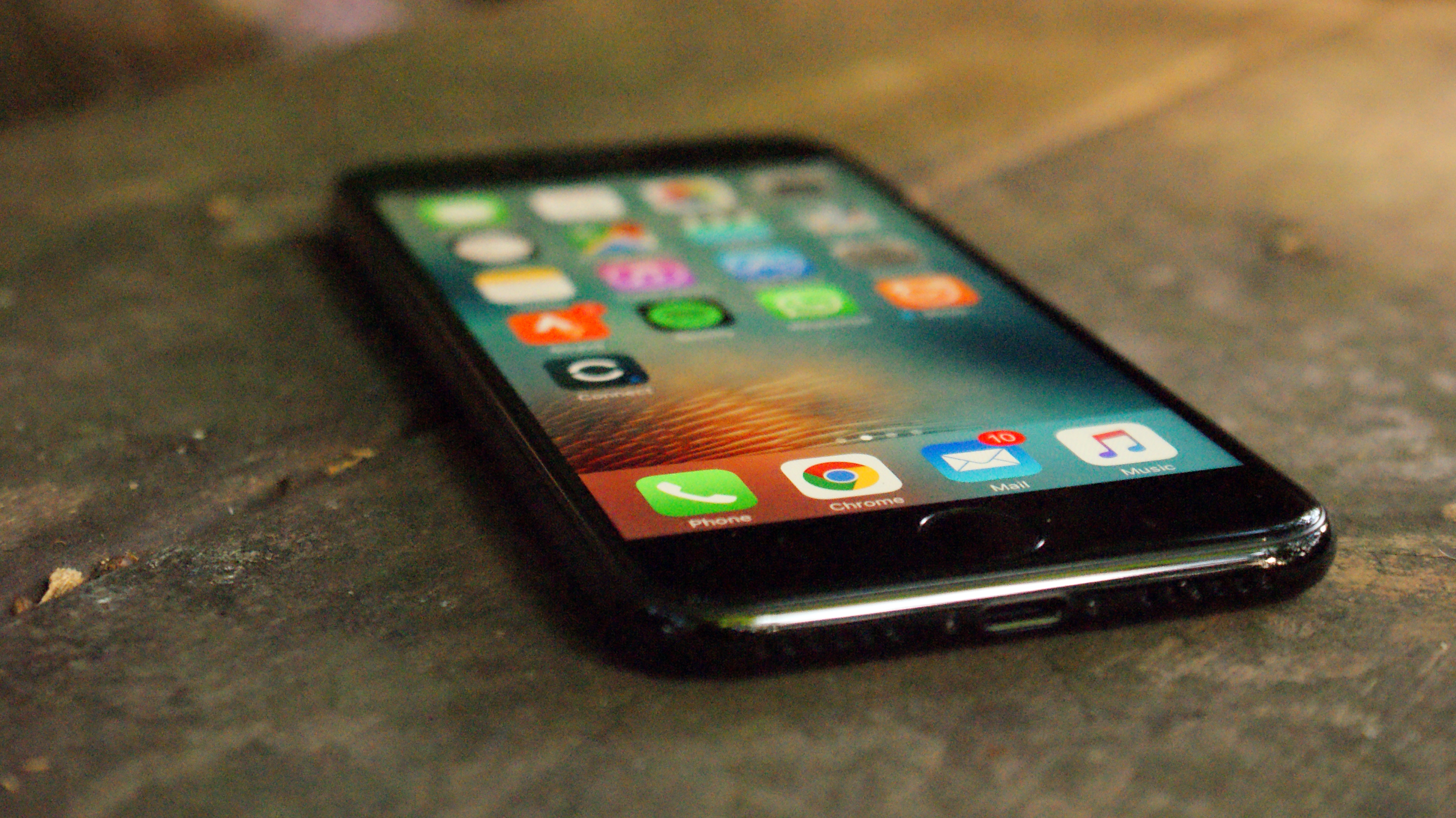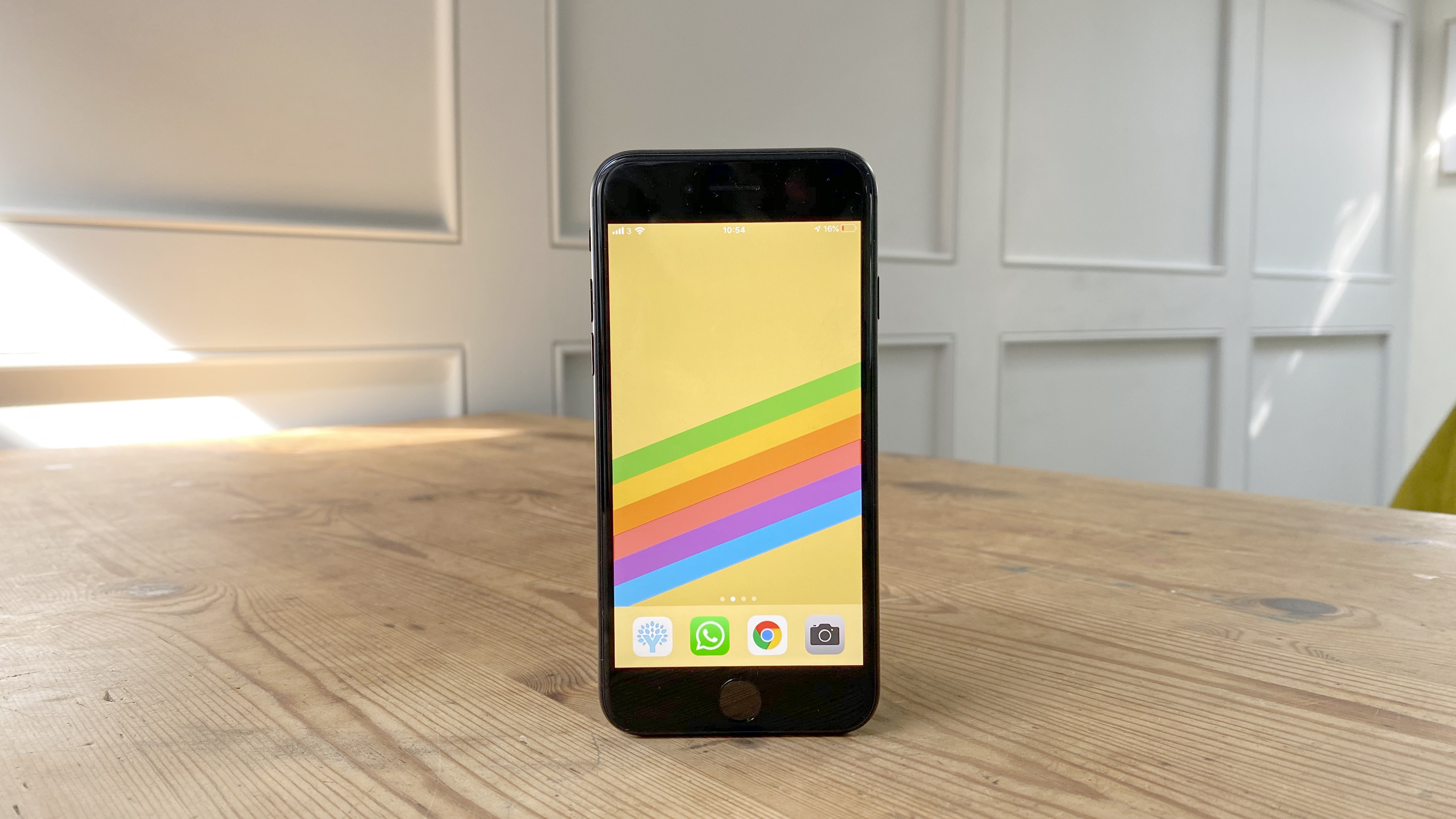
The original iPhone SE launched in 2016, the very same year as the flagship iPhone 7. Four years on, the iPhone SE (2020) takes elements of both and combines them with some punchy modern components.
All of which raises an interesting (and distinctly first world) dilemma for iPhone 7 owners looking to upgrade. When you bought your last phone, it was the top dog. But do you need to splash the cash on an iPhone 12 Pro or an iPhone 11 Pro when the iPhone SE (2020) exists?
There’s only one thing for it. It’s time to pitch the iPhone SE (2020) and the iPhone 7 against one another to see where the two phones intersect and where they differ. Is Apple’s newest phone a worthwhile upgrade?
Several months on from its release and our review, we’ve got a pretty good handle on the iPhone SE (2020) and what it has to offer. Here’s how it stacks up to its creaky antecedent.
iPhone SE (2020) vs iPhone 7 price and availability
The 64GB iPhone SE (2020) has been available for $399 / £419 / AU$749 from Apple and all good third-party retailers since April 24, 2020. That price edges up to $449 / £469 / AU$829 for 128GB and $549 / £569 / AU$999 for 256GB.
Apple no longer supplies the iPhone 7, which launched on September 16, 2016. However, plenty of third-party retailers continue to offer the iPhone 7 brand new. You just need to shop around online a little.
This means that you can pick up a new 32GB iPhone 7 for well south of its $649 / £599 / AU$1,079 launch price. For example, at the time of writing, Amazon UK is offering the 32GB iPhone 7 for £295 (around $376 / AU$531).
Sign up for breaking news, reviews, opinion, top tech deals, and more.
You can go much lower if you’re willing to accept one of the many refurbished iPhone 7 units in circulation. In the US, an Amazon Renewed iPhone 7 32GB costs just $193 (about £150 / AU$270) at the time of writing.
- Compare iPhone SE deals and iPhone 7 deals

Design
The iPhone SE (2020) and the iPhone 7 share the same design DNA. Both phones, together with the iPhone 6S and iPhone 8, are subtle evolutions on the iPhone 6 blueprint launched back in 2014.
They have the same shape as one another, the same small 4.7-inch IPS LCD display flanked by the same chunky forehead and chin, and the same Touch ID sensor hidden in the home button.
For all that external sameness, though, they’re not identical. The iPhone SE (2020) is ever so slightly bigger by a couple of fractions of a millimeter in all directions. The newer phone is also 10g heavier at 148g.

That weight disparity can largely be put down to the fact that the iPhone SE (2020) has a glass back, whereas the iPhone 7 is all-metal. This actually makes the iPhone SE (2020) feel a lot more modern and high-end than the iPhone 7, not to mention a little easier to grip. Of course, it’s also more prone to cosmetic damage.
These changes are reflective of the fact that the iPhone SE (2020) is actually using the iPhone 8 as its starting point rather than the iPhone 7. So while they might look very similar, iPhone 7 users can be reassured that they would actually be getting a fresher, more refined design if they upgraded to an iPhone SE (2020).
Both phones are IP67 rated, and neither has a headphone jack. On this front, the iPhone 7 at least has the benefit of shipping with a Lightning to 3.5mm adapter. The iPhone SE (2020) omits this handy (though easy-to-lose) adapter, so keep hold of it if you’re upgrading.

Display
The launch of the iPhone X in 2017 introduced a new phase of front-filling OLED screen technology to the iPhone range. But you wouldn’t know that by looking at the iPhone SE (2020)'s display, which closely resembles that of the iPhone 7.
Both are 4.7-inch IPS LCDs, with the exact same 750 x 1334 resolution, 625 nits maximum brightness, and wide color gamut support. As LCD technology goes, both are crisp and vibrant, though we found that the iPhone SE (and by extension the iPhone 7) doesn’t get as bright as we’d like in outdoors conditions by modern flagship standards.

There are a couple of minor differences between the two displays, though. One is that the iPhone SE (2020) comes with Apple’s True Tone technology, which adjusts the color tone of the picture according to the ambient light. You don’t get this optional eye-preserving feature with the iPhone 7.
Conversely, the iPhone 7 packs Apple’s 3D Touch technology, which means that its screen is sensitive to pressure. As with the iPhone 11 family, the iPhone SE (2020) ditches this feature.
This isn’t actually much of an advantage for the iPhone 7, though, as Apple has gradually rolled back its 3D Touch implementation within iOS. Only a few old apps and games really take proper advantage of it nowadays.
Camera
So far we’ve been playing spot the difference with the iPhone SE (2020) and the iPhone 7. But the camera is the first area where there’s a marked disparity between the two.
In terms of hardware, the two phones are at least a generation apart. Even though both use 12MP f/1.8 single sensors with optical image stabilization (OIS), the iPhone SE (2020) utilizes the iPhone 8’s newer hardware rather than the iPhone 7’s.
But the difference is even more pronounced when you factor in the iPhone SE (2020)’s use of the A13 Bionic chipset, and the vastly improved image processing capabilities that this chipset brings.

With these iPhone 11-level smarts on board, the iPhone SE (2020) takes quicker, sharper, more accurate shots in all conditions, including low light (although there’s no Night mode in either).
We even found the results to be comparable to the iPhone 11 Pro Max in general bright conditions. Or certainly far closer to Apple’s current flagship than to the iPhone 7, at any rate.
The iPhone SE (2020) can also take Portrait shots. Sure, they’re not as good as on iPhones with dedicated second lenses. But they’re still decent, and are certainly better than no Portrait mode at all, which is what the iPhone 7 provides.
Specs and performance
As we’ve already alluded to, the biggest hardware difference between the iPhone SE (2020) and the iPhone 7 is an internal one. The newer device might look a lot like its 2016 ancestor, but it’s powered by the same silicon as its 2019 brothers.
The A13 Bionic chipset that runs the iPhone SE (2020) is the same as that of the iPhone 11 family, which is still just about the fastest mobile chipset on the market almost a year on from release. By comparison, the iPhone 7’s A10 Fusion simply does not compete.
The iPhone SE (2020) has 3GB of RAM next to the iPhone 7’s 2GB, too. This makes everything tick along that little bit smoother on the newer phone, and enables more apps to remain suspended in the background.

The results from the iPhone SE (2020)’s supercharged internals are remarkable. Opening and switching between apps is much quicker on the iPhone SE (2020) than on the iPhone 7, while advanced tasks like exporting an iMovie and compressing a 1080p four-and-a-half minute video are more comparable to the iPhone 11 Pro Max. Seriously, the iPhone 7 doesn’t even get close.
Needless to say, if you’re an avid gamer, the iPhone SE (2020) is a much better bet. It will run all of the latest 3D games without compromise, whereas the same games on the iPhone 7 will be less fluid and may run at a lower level of complexity.
The other hidden benefit of the iPhone SE (2020)’s superior hardware is that it’s much more future-proof than the iPhone 7. The older phone is near the bottom of the list for ongoing iOS and app support, which means you can expect it to drop off altogether over the next couple of years. The iPhone SE (2020), meanwhile, will receive ongoing software support for many years to come.
Battery life
Here’s an interesting quirk of the iPhone SE (2020). It might be ever so slightly bigger and heavier than the iPhone 7, but its battery is actually smaller.
The newer phone has a 1,821mAh battery, while the iPhone 7 uses a 1,960mAh unit. So, that’s a win for the iPhone 7 when it comes to battery life, right?
Not so fast. The iPhone SE (2020) uses its smaller battery more smartly than the iPhone 7, courtesy of the more efficient A13 Bionic chipset. The result is a phone that, according to Apple, “Lasts about the same as iPhone 8”.

That equates to a quoted 40 hours of audio playback or 13 hours of video playback. Which, as it happens, is an identical estimate to the iPhone 7.
Still, neither phone has anything to boast about here, and we found battery life to be a key complaint in both of our reviews. They’ll each last through a full day of light to normal usage, but only just, and they fall several hours short of the iPhone XR and iPhone 11 family.
When it comes time to recharge, the iPhone SE (2020) gives you more options. Its glass back is more than a mere aesthetic choice, as it permits Qi wireless charging. With the iPhone 7, it’s a physical Lightning charger or nothing.

Takeaway
The iPhone SE (2020) might take a lot of its style from the iPhone 7, and both 4.7-inch displays hark back to a previous generation of Apple phones. But don’t let those external similarities fool you - the iPhone SE (2020) is a much more modern handset.
Its performance level is several generations ahead of the iPhone 7’s, courtesy of Apple’s latest processor. Meanwhile, the superficially similar camera hardware is nothing of the sort when you break it down. The iPhone SE (2020)'s camera takes much better and more varied snaps.
Add in the fact that the iPhone SE (2020)’s iPhone 11-level underpinnings ensure a much higher degree of future-proofing, and we’d suggest that purchasing a new iPhone 7 would be a somewhat shortsighted decision.
If your budget is strictly limited, and a new iPhone 7 falls within that price range, then it remains a solid phone. But the iPhone SE (2020) provides much better value in the long run, and a much more fluid experience in the here and now.
- iPhone 12 vs iPhone 11: here's what you need to know

Jon is a freelance journalist who has been covering tech since the dawn of the smartphone era. Besides TechRadar, his words and pictures have appeared in The Telegraph, ShortList, Tech Advisor, Trusted Reviews, Expert Reviews, and more. He largely covers consumer technology, with a particular focus on smartphones and tablets. However, he's also been known to dabble in the worlds of entertainment and video games.




